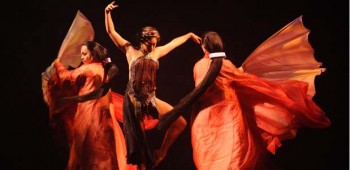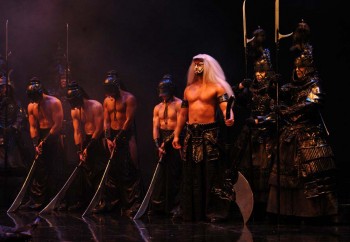OA’s Turandot – Magical, beautiful and among the best I’ve seen
Thanks to the three tenors, and more specifically Luciano Pavarotti, ‘Nessum Dorma’ is unarguably the most famous opera aria in the world. But the opera from which the aria comes, Turandot, is not often staged in Australia. This was surprisingly my first experience of a live performance of Turandot, but this twenty-two-year-old production ranks amongst the best opera I have seen.

The last of Puccini’s operas, Turandot was first performed in 1926, and Puccini unfortunately died while completing the opera. The story is not as sentimental as his other operas: In Peking the cold hearted Princess Turandot demands that any suitor must correctly answer three riddles or be put to death. The previous year, eight brave men have been executed, this year they’re up to number thirteen already. The opera opens with the latest of these (the Prince of Persia) meeting his fate, with a strong chorus scene of crowd blood lust followed by sadness at another futile loss of life. It is into this scene that the hero Calaf arrives and, as with the men before him, one sight of the enigmatic Princess and he is smitten. Calaf of course isn’t just any old guy, he is the son of Timur, the banished King of Tartary who, blinded, has been wandering the country accompanied by the faithful slave girl Liu (who happens to be in love with Calaf). How Calaf finally thaws Turandot’s icy heart forms the rest of the opera.
A reason for the opera’s relative scarcity on our stages is possibly the need for a particularly strong lead – the title role requires a dramatic soprano with a steely voice and considerable stamina – but Opera Australia has filled the brief with US singer Susan Foster, whose powerful and clear ringing sound manages (where others more often fail) to overcome the deadening acoustic of Melbourne’s State Theatre. Turandot is an unsympathetic character to say the least and has no scene stopping arias, and it is unfortunate but not entirely surprising that the deserving Foster didn’t elicit the same cheers on opening night as her co performers.
As Calaf, audience favourite Rosario La Spina was clearly on familiar ground in his confident rendition of ‘Nessum Dorma’ and Jud Arthur brought his customary power to the role of Timur. But it was Hyeseoung Kwon (Liu) who out of all the principals communicated believable passion, while always delivering singing of exquisite beauty.

The real star of this production though is, well, the production itself. First mounted in 1990, the strength in the concept of its creator Graeme Murphy sees this restaging feeling fresh and contemporary. The visually arresting design by Kristian Fredrikson and John Drummond Montgomery (lights) is based on strong shapes and symbolic colours, incorporating recognisable Eastern forms including giant fans, gongs and flowing cloth.
The chorus are an integral part of the drama – storytellers and witnesses to Turandot’s brutality, they are onstage more often than not. Murphy’s choreography of the chorus is inspired. Their wavelike movements in evocative tableaux transform the chorus into a tangible emotional force on stage. Muscled henchmen and dancers complete the visual feast. In one scene puppets are used to create floating ghosts, and I heard a young girl sitting behind me gasp “how do they do that?”. It was just one of many magical moments in this beautiful production.
